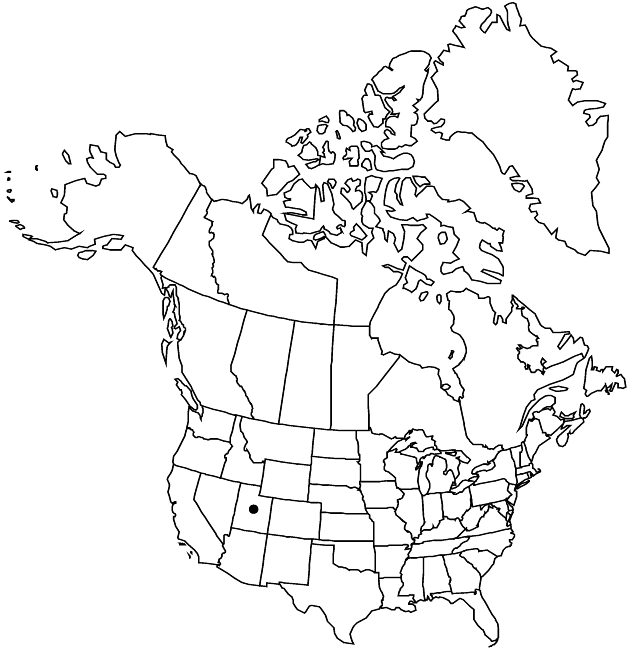Erigeron cronquistii
Brittonia 5: 201. 1944.
Perennials, 1.5–7 cm (cespitose); taprooted, caudices multicipital or branches relatively short and thick. Stems erect (greenish), sparsely and closely strigose, eglandular. Leaves mostly basal (persistent, petioles 2/3–3/4 leaf lengths); blades (greenish) narrowly oblanceolate to oblanceolate-spatulate, (5–) 10–40 × 2–4 mm, margins entire (apices rounded to obtuse), faces sparsely strigose, eglandular. Heads 1 (–2). Involucres 3–5 × 5–8 mm. Phyllaries in 2–3 series (often purplish), sparsely to moderately hirsute, sparsely to moderately minutely glandular (medially and near apices). Ray-florets 10–20 (–25); corollas white or light pink, 5–6 mm, laminae not coiling or reflexing. Disc corollas 2.4–3.4 mm. Cypselae 1.5–1.8 mm, 2-nerved, faces sparsely strigose; pappi: outer of setae, inner of 12–20 bristles. 2n = 18.
Phenology: Flowering May–Jul.
Habitat: Crevices, ledges, and erosion pockets in limestone cliffs, Douglas fir, aspen, mountain brush
Elevation: 1600–3000 m
Discussion
Of conservation concern.
Selected References
None.
Lower Taxa
"thick" is not a number.
